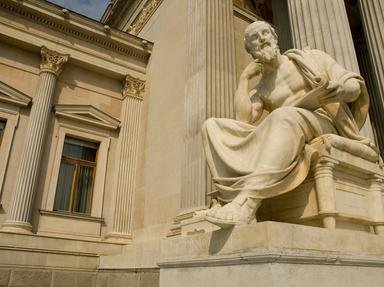Quiz Answer Key and Fun Facts
1. The word yoga is often misunderstood in the West. But what does it really mean? Which of the following most accurately describes its meaning?
2. Which of the following best describes the 'real self' of man?
3. Which of the following terms means freedom?
4. Swami Vivekananda explains there are four main yoga types, each corresponding to the four main character types. Which of the following is NOT one of them?
5. Vedanta recognises that there have been divine incarnations throughout time for different religions. Jesus Christ was born to help save mankind. Which of the following is the collection of spiritual lessons he gave his disciples?
6. Which term closely describes righteous living or duty?
7. According to the eightfold path to enlightenment, which of the steps refers to the withdrawal of the senses?
8. Repetition of a holy name and the contemplation of its meaning is considered one of the best methods to attain purity. What is the correct term?
9. According to Vedanta, what is the term given to the cosmic primordial veil of ignorance?
10. In the eightfold path to enlightenment, the first step (and the stumbling block for most) is Yama, or moral conduct. Which phrase refers to non-violence?
11. The universe is said to exist in three states or 'gunas'. Which of the following refers to the state of activity and the pursuit of desire?
12. Which of the following terms best describes the occult or psychic powers one may acquire when pursuing the path to liberation?
13. Who was said to be the main disciple of Sri Ramakrishna?
14. The Chakras are very significant in yoga. What is the location of the Anahata?
15. In the West, we often think of yoga as a fashionable thing, keeping fit and stretching into different postures etc. Maintaining a healthy body is still important as it supports a healthy mind and helps promote the right condition for yoga philosophy and meditation. But what is the name of this yoga that refers to maintaining a healthy body and is merely complementary to the whole system?
Source: Author
Vedantin
This quiz was reviewed by FunTrivia editor
agony before going online.
Any errors found in FunTrivia content are routinely corrected through our feedback system.

